Test Photos of the Moon with RX10 M4 Part 2 - July 2019
Overview of the Tests | Test Photos (Hand-held) | Test Photos (Tripod) | Conclusions
On this page, I present further test photos of the moon, where I tried out the Multi Frame Noise Reduction (MFNR) of the Sony RX10 M4 and compared the results with "normal" photos. After a first test of different multi-frame recording methods had not shown any advantages for these methods (see page Test Photos of the Moon with RX10 M4 - July 2019), I wanted to test the MFNR method once again, because I had not used it optimally in the first test. This time, as with the "normal" shots, I set the ISO value to 100. I also varied the level of noise reduction, at least partially. With "Normal" noise reduction 4 shots are taken, with "High" noise even 12 shots. I left JPEG quality at "Fine", because I do not expect any improvements from "Superfine" in view of the low quality of the moon shots.
Note: See page Test Photos of the Moon with RX10 M4 - July 2019 for more information on Multi-frame methods and first results. See also page Test Photos of the Moon with RX10 M4 Part 3 - July 2019, which offers more information on HDR.
Overview of the Tests
Note: I will not go into variations of focusing here.
On July 13, 2019 I took two series of test shots:
- Series 1 (22:20 ff, sky darker, partly clouds in front of the moon): Multi Frame Noise Reduction (Normal) and "normal" shots (DRO Auto), both hand-held
- Series 2 (22:40 ff, sky darker, no clouds in front of the moon): Multi Frame Noise Reduction (Normal and High) and "normal" shots (DRO Auto), all with tripod and cable release
In the following, I will present some selected sample photos (the sharpest) from the series listed above. It should also be noted that photos of similar quality can differ significantly with respect to details due to air turbulence (an animation would make this visible). Therefore, it was not always easy to pick the, in my opinion, best photo.
Test Photos (Hand-held)
All photos are cropped to 900 x 900 pixels, but display all the pixels of the moon, thus, they are not scaled (when viewed on a retina screen). Clicking on the photos shows them in double size (1:1) in a new window. The original photos are linked.
The exposure was the same in all cases and manual (1/250 sec, f/4), but too short. The photos are therefore slightly processed (contrast increased). Unfortunately the focal length of three of the four presented samples "slipped" from 600 mm to 500 mm. Sometimes, there were also clouds in front of the moon.
Note: The differences between the different photos are only visible if you download the photos and view them at 200% in a photo editing program!
Samples
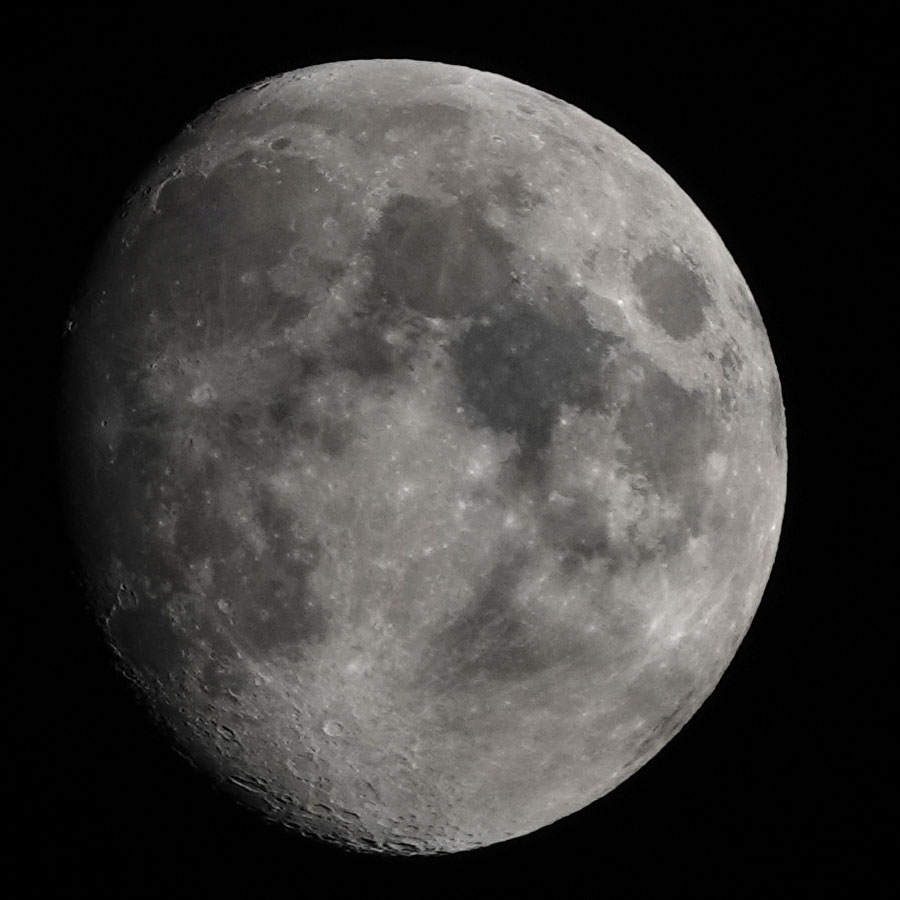 |
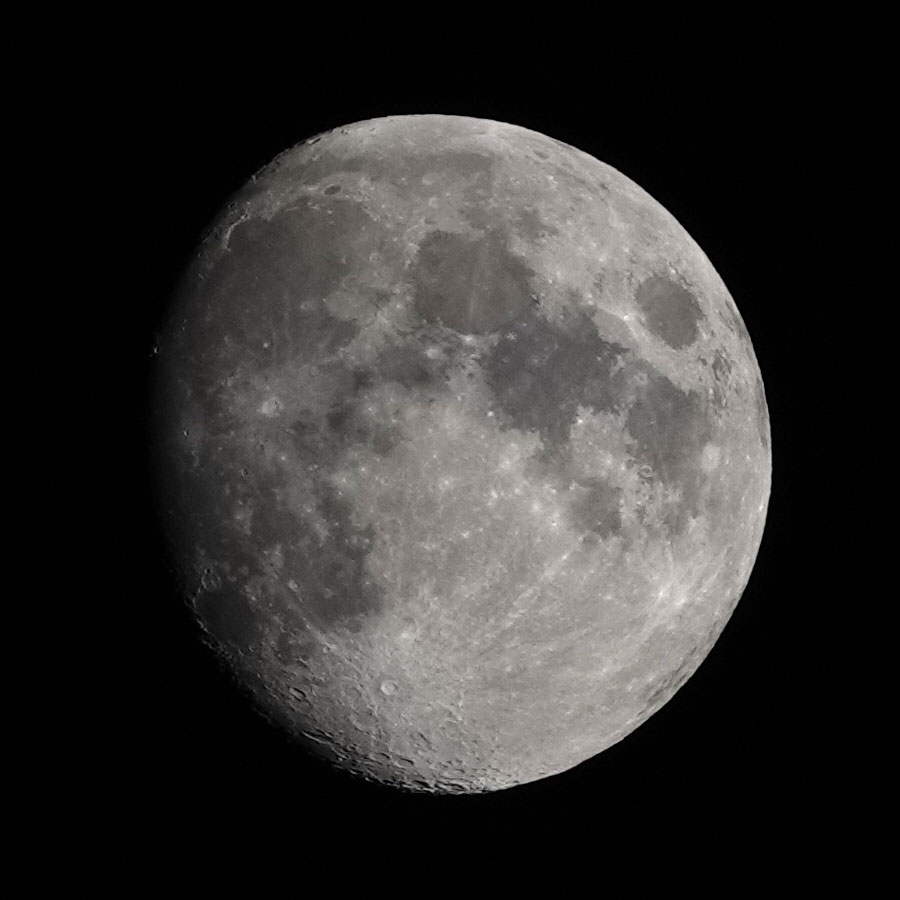 |
|
Normal (DRO Auto), ISO 100, 1/250 sec, f/4, 600 mm; original |
MFNR (Normal), ISO 100, 1/250 sec, f/4, 500 mm; original |
|
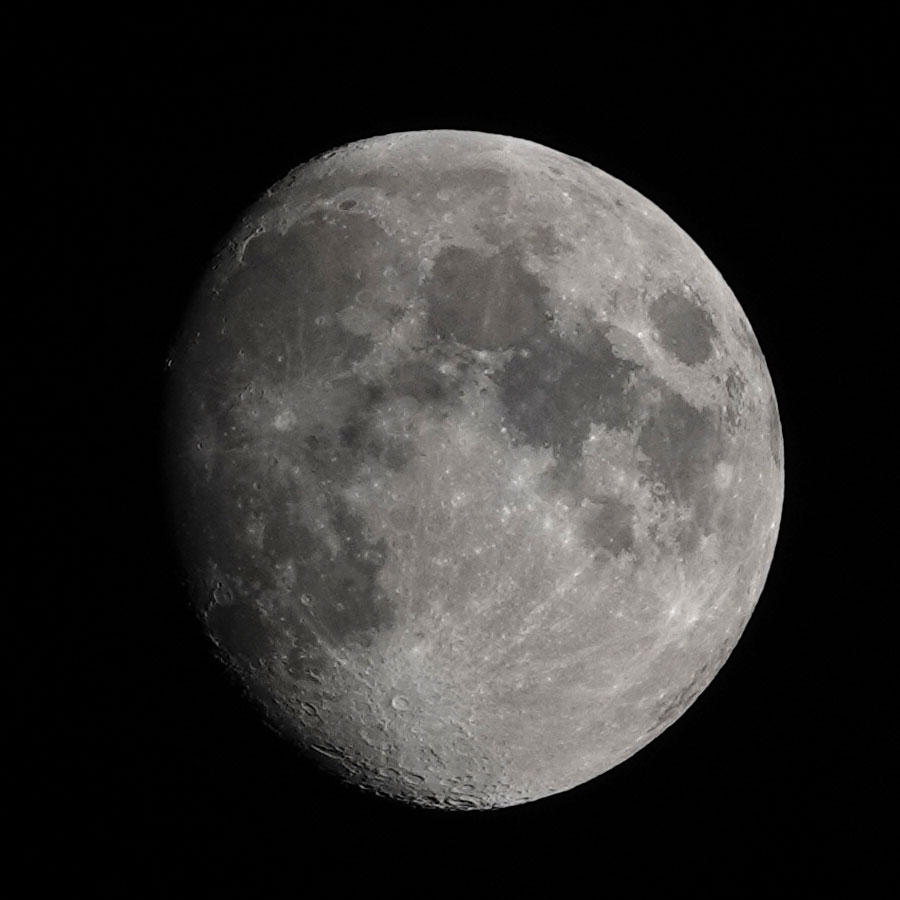 |
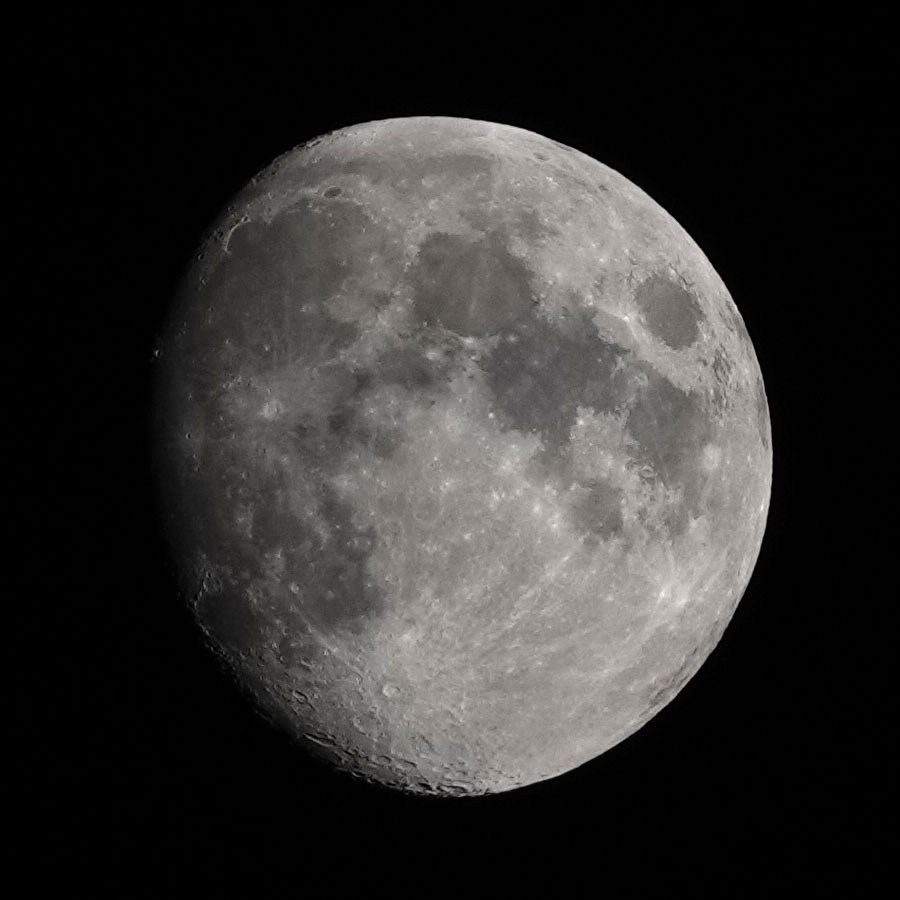 |
|
Normal (DRO Auto), ISO 100, 1/250 sec, f/4, 500 mm; original |
MFNR (Normal), ISO 100, 1/250 sec, f/4, 500 mm; original |
Conclusions
I was not able to find any advantages of the MFNR photos (noise reduction set to "normal") compared with the "normal" photos in this not optimal test series, rather the opposite.
Test Photos (Tripod)
All photos are cropped to 900 x 900 pixels, but display all the pixels of the moon, thus, they are not scaled (when viewed on a retina screen). Clicking on the photos shows them in double size (1:1) in a new window. The original photos are linked.
Exposure was the same in all cases and manual (1/125 sec, f/4). This time, all photos were indeed taken with an equivalent focal length of 600 mm.
Note: The differences between the different photos are only visible if you download the photos and view them at 200% in a photo editing program!
Run 1 (Samples) |
Run 2 (Samples) |
|
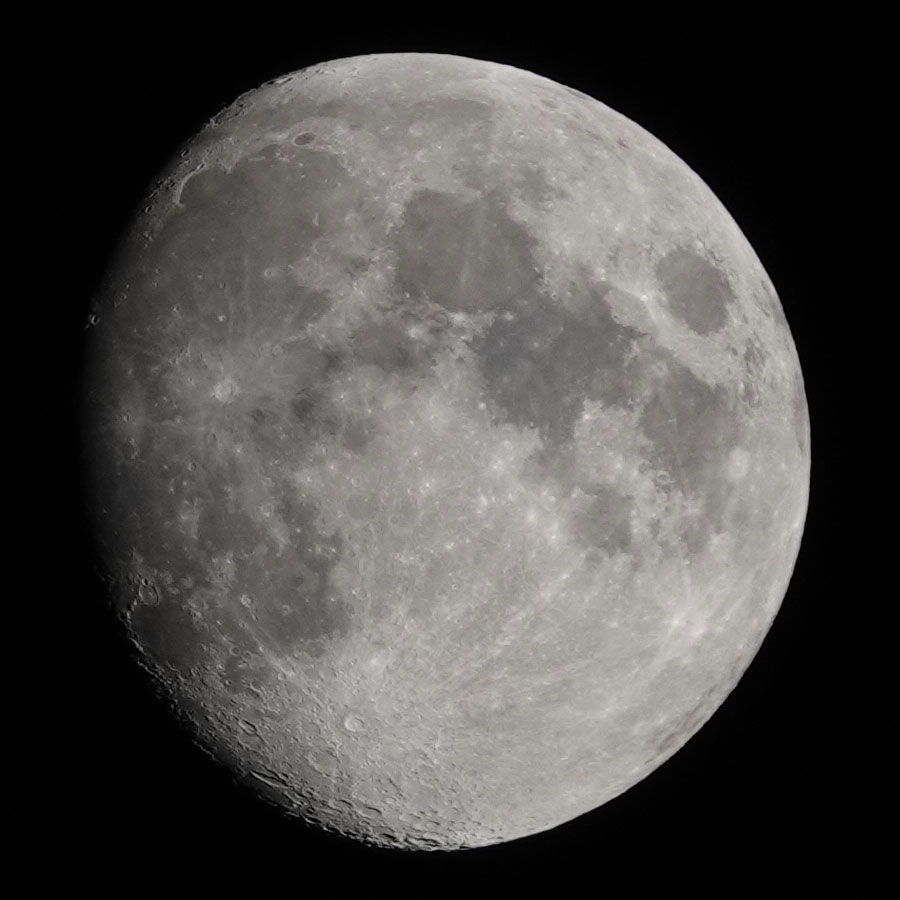 |
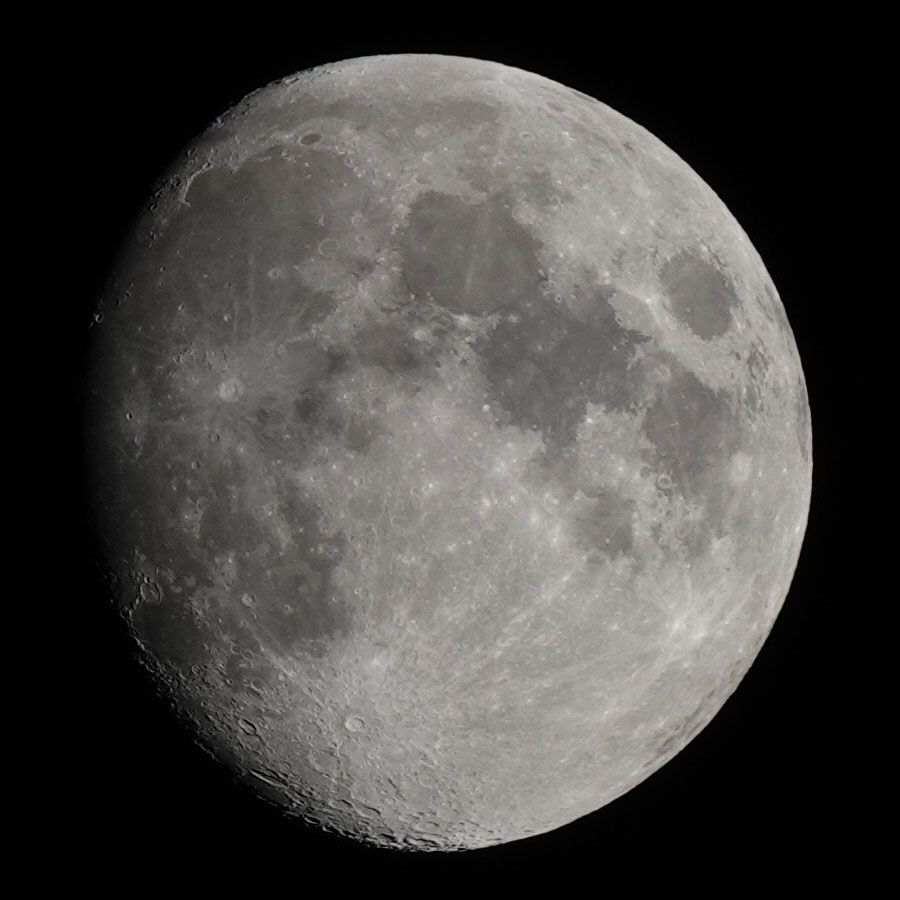 |
|
Normal (DRO Auto), ISO 100, 1/125 sec, f/4; original |
Normal (DRO Auto), ISO 100, 1/125 sec, f/4; original |
|
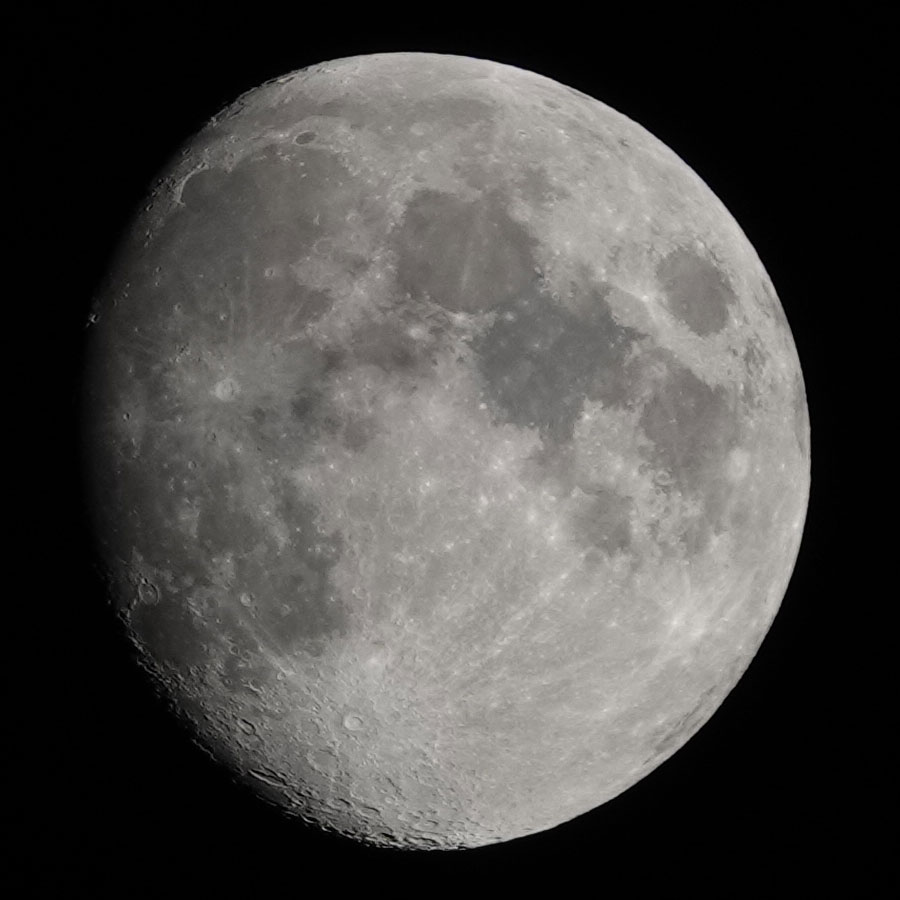 |
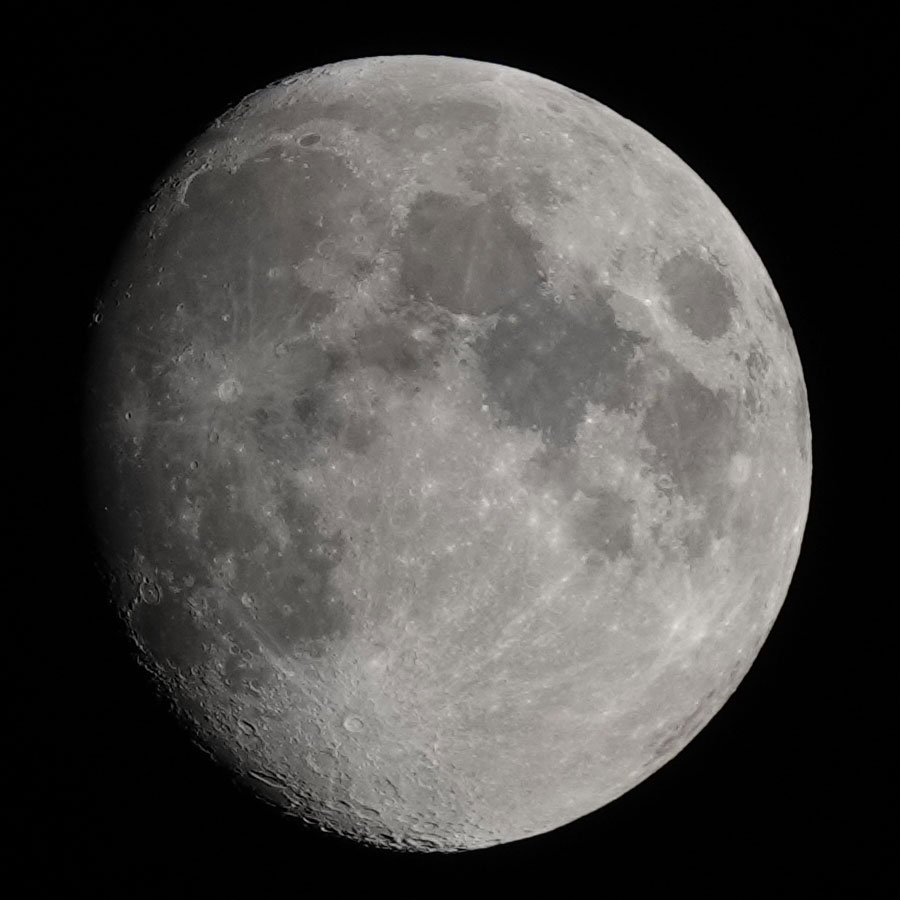 |
|
MFNR (Normal), ISO 100, 1/125 sec, f/4; original |
MFNR (Normal), ISO 100, 1/125 sec, f/4; original |
|
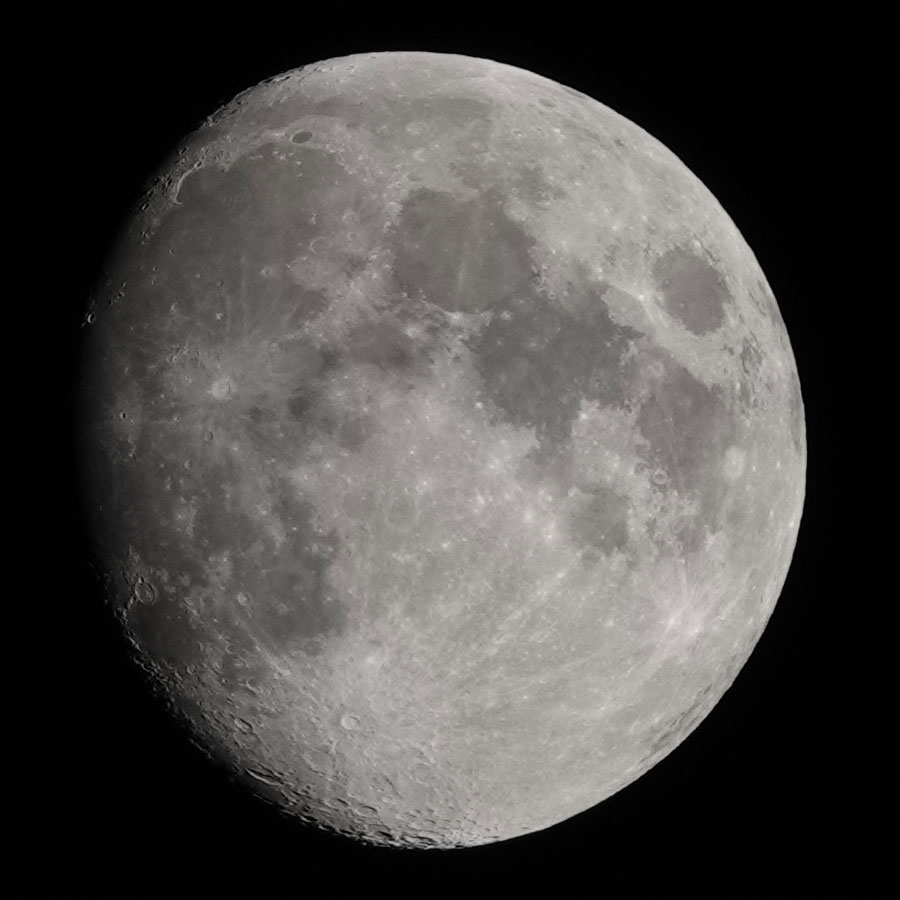 |
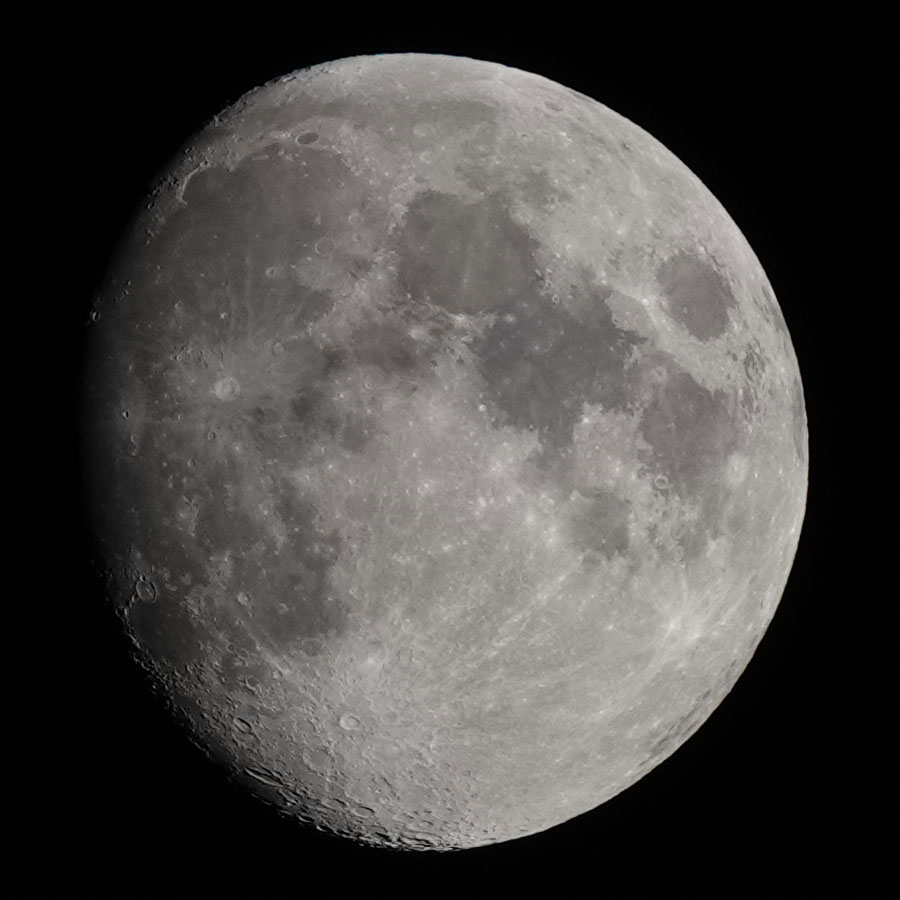 |
|
MFNR (High), ISO 100, 1/125 sec, f/4; original |
MFNR (High), ISO 100, 1/125 sec, f/4; original |
Conclusions
Even in this better controlled test series with two runs, I was not able to find any advantages of MFNR, of whatever type, over "normal," that is, single photos.
Representation of Details
With respect to details, I cannot see any advantage for the MFNR recordings. Sometimes one variant shows more details, sometimes the other, sometimes the normal one, depending on the air turbulence...
In the following, I present a few examples from run 1 with MFNR set to "High" and a "normal" shot to demonstrate how different details are reproduced even for short consecutive shots:
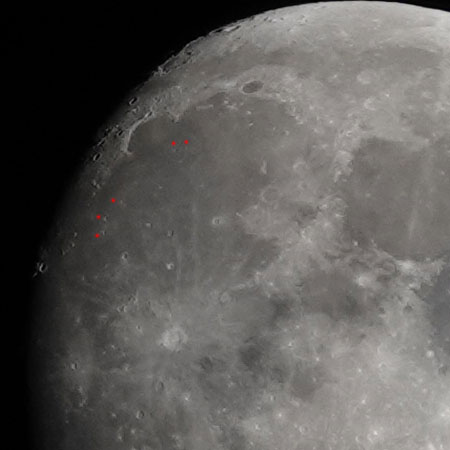 |
 |
|
Normal (DRO Auto), ISO 100, 1/125 sec, f/4; original |
MFNR (Normal), ISO 100, 1/125 sec, f/4; original |
|
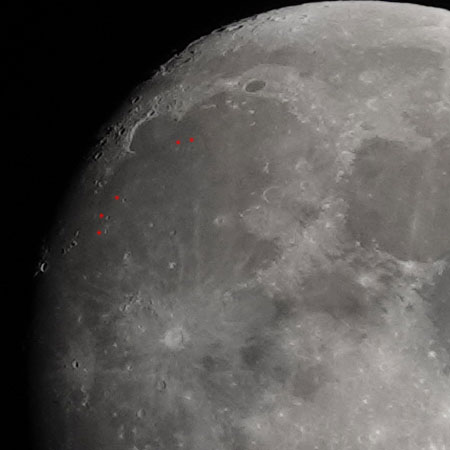 |
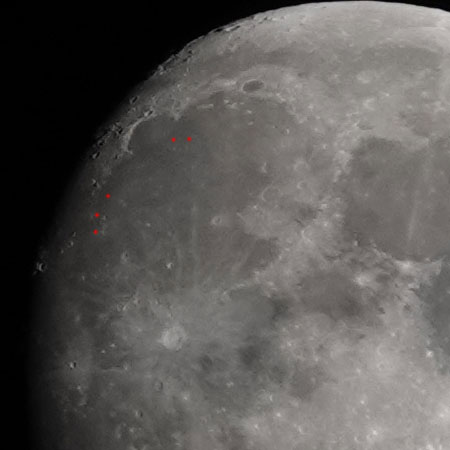 |
|
MFNR (Normal), ISO 100, 1/125 sec, f/4; original |
MFNR (Normal), ISO 100, 1/125 sec, f/4; original |
So, for details (see the red dots), as well, I cannot see any advantages of the MFNR method compared to the "normal" photo.
Here once again a section from the three sample photos from run 2 (the "normal" photo is repeated):
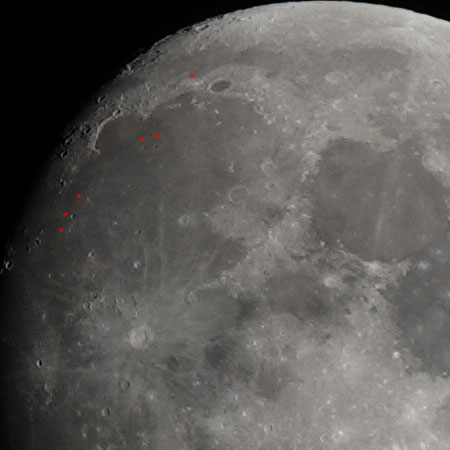 |
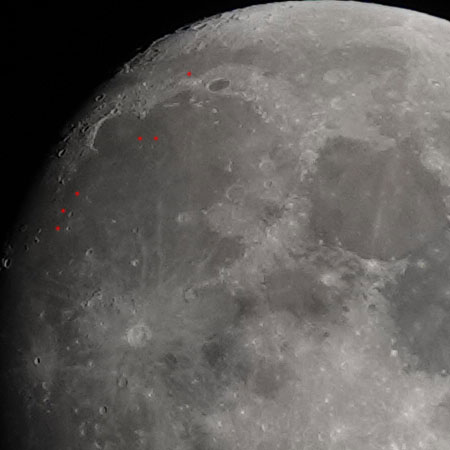 |
|
Normal (DRO Auto), ISO 100, 1/125 sec, f/4; original |
MFNR (Normal), ISO 100, 1/125 sec, f/4; original |
|
 |
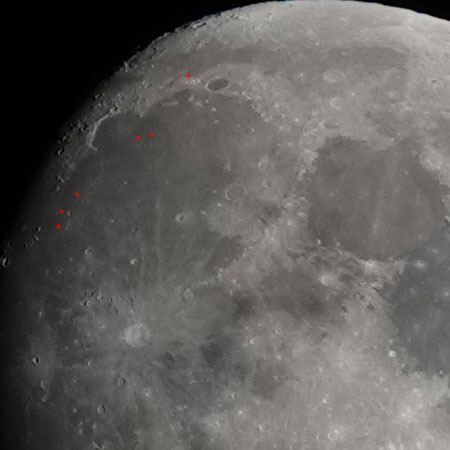 |
|
"Normal" repeated; original |
MFNR (High), ISO 100, 1/125 sec, f/4; original |
Once again, there are no advantages for me with respect to the MFNR method compared with "normal" photos.
Conclusions
Because I did not use Multi Frame Noise Reduction (MFNR) at ISO 100 during my first tests that were not performed optimally (see page Test Photos of the Moon with RX10 M4 - July 2019), I did so in this test, first using hand-held shots and then with a tripod and a cable release. In my opinion, ISO 100 should offer an advantage over "normal" shots, that is, single shots.
Unfortunately, I cannot find any advantages for the MFNR method in my photos. Maybe, I made mistakes or misunderstood how these multiple shots work. Therefore, I cannot recommend using this method for image enhancement when taking photos of the moon at the moment.
| 21.08.2019 |